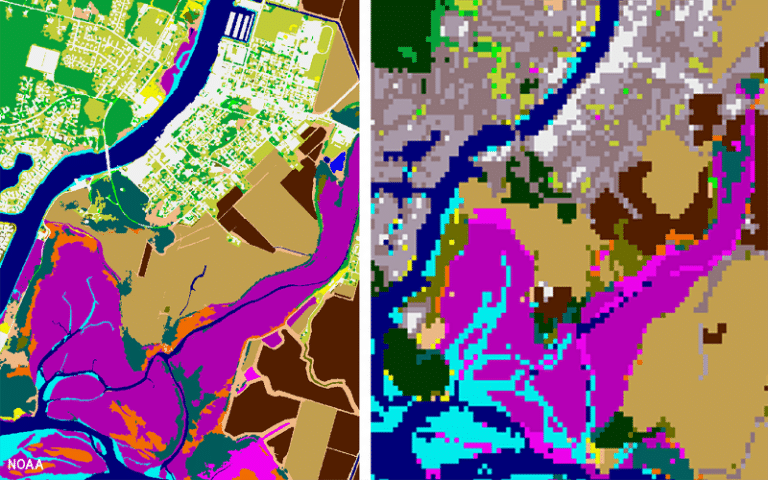New Data from NOAA Provides Insight into How Flooding Affects Employment
As the need for coastal resilience planning becomes more urgent, communities often struggle to access all the necessary information that will help them understand their vulnerabilities and develop strategies to mitigate associated risk. One key metric that is especially hard to find is data on the number of businesses and employees that could be impacted by flood events.
Limited visibility into the jobs and businesses at risk leaves a big gap in a risk analysis. Leaders would benefit from knowing how county and state economies might be affected, and the most vulnerable job sectors, following a flood event.
To help fill this data gap, NOAA’s Office for Coastal Management partnered with the Bureau of Labor Statistics to create employment statistics for different coastal inundation zones. Visit the website to download these data.
These data are useful to communities that need to determine potential economic disruptions due to flood risks, and ASFPM and NOAA are interested in hearing from News & Views readers who have used employment data to inform their flood risk mitigation strategies or to make the case for such measures when communicating with community members. Please send details to Polina Dineva at polina.dineva@noaa.gov.

Using Employment Statistics
With these data, users can:
- Identify the number of businesses and employees in a county that lie within a 100-year floodplain to help a county determine its risk of business interruptions or closures from flood events;
- Assess the number of businesses and employees in a county that would experience disruptions or damage from a tsunami event in a county;
- Examine the number of businesses and employees that would experience damage and closures from a hurricane’s storm surge;
- Analyze the major economic sectors that could be affected by varying levels of coastal flooding in a state; and
- Identify target economic sectors within a state that could be most vulnerable to temporary or permanent closures from coastal flood events.
The 2019 employment statistics are available for coastal states in the contiguous U.S. and Hawaii, except for Massachusetts, Michigan, New York, and New Hampshire, which have laws that preclude external researchers from using geolocational data from their states at the Bureau of Labor Statistics.
The basic format of these data is tabular outputs. NOAA anticipates making additional formats available in the future. Preview the data sets.




